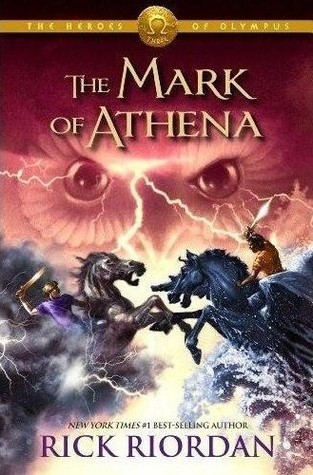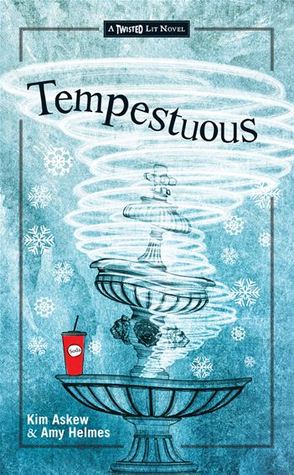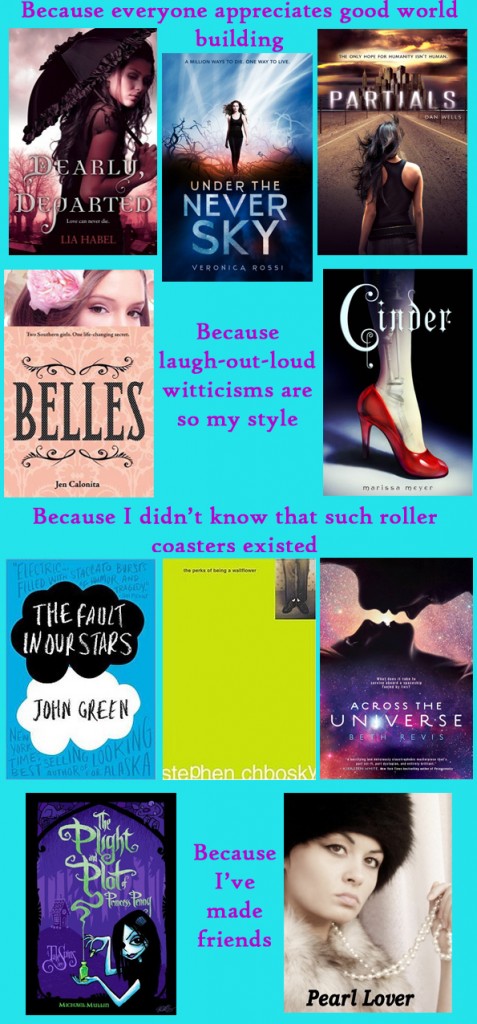
Ana's Rating
Readers Rating
Elysia is created in a laboratory, born as a sixteen-year-old girl, an empty vessel with no life experience to draw from. She is a Beta, an experimental model of a teenage clone. She was replicated from another teenage girl, who had to die in order for Elysia to exist.
Elysia’s purpose is to serve the inhabitants of Demesne, an island paradise for the wealthiest people on earth. Everything about Demesne is bioengineered for perfection. Even the air induces a strange, euphoric high, which only the island’s workers–soulless clones like Elysia–are immune to.
At first, Elysia’s life is idyllic and pampered. But she soon sees that Demesne’s human residents, who should want for nothing, yearn. But for what, exactly? She also comes to realize that beneath the island’s flawless exterior, there is an under-current of discontent among Demesne’s worker clones. She knows she is soulless and cannot feel and should not care–so why are overpowering sensations cloud-ing Elysia’s mind?
If anyone discovers that Elysia isn’t the unfeeling clone she must pretend to be, she will suffer a fate too terrible to imagine. When her one chance at happi-ness is ripped away with breathtaking cruelty, emotions she’s always had but never understood are unleashed. As rage, terror, and desire threaten to overwhelm her, Elysia must find the will to survive.
The first in a dazzlingly original science fiction series from best-selling author Rachel Cohn, “Beta “is a haunting, unforgettable story of courage and love in a cor-rupted world. Praise for Beta “A terrific premise that is equally well executed…Readers can only hope [the sequel] will be as thrilling as this series kickoff.”–Los Angles Times
“I do not wish, I serve” are very dangerous words, especially when uttered by a seemingly soulless clone. These words are too objectifying, too subordinating, too slimy. I don’t like them at all. And to write a whole book based on them? Controversial. Wonderful, if pulled off well. Otherwise, let’s just say… not. For many reasons, Beta was not.
Its first problem is the world building. In order for me to be satisfied in this department, Rachel Cohn would have needed to give her readers just the right amount of history coupled with the just the right amount of description. Unfortunately, she was lacking in the former and much too ample in the latter. Apparently Demesne, the island for the elite on which Beta takes place, was formed after the Water Wars. The Water Wars being…? I couldn’t tell you for sure, and I don’t think that Cohn could either. And then there’s the descriptions. Look, Miss Cohn, we know that Demesne is beautiful. We get that. You don’t need to use you extensive imagery skills on every other page to repeat it to us. This isn’t The Lord of the Rings, and I’m not captivated enough to put up with that.
Next you have Beta‘s characters. Most of these fell flat, which would be understandable if the novel was narrated by a heartless clone (which it is so obviously not). Greer, Dementia, Tahir– they were all the same to me. Elysia never dug below the surface here, and the characters never shed their stereotypical shells.
I guess this brings me to the romance, if you can call it that. I, for one, don’t call a one- dimensional relationship based on mutual hawtness romance. I call it lust. And possibly stupidity. Moreover, have I mentioned how sleazy our little soulless clone is? For someone who’s only been alive for a few months, she’s certainly quite the expert on toying with teenage boys. I mean, cheating on your boyfriend doesn’t just come naturally. Or respectably. I’ll give you a sneak peak of this wondrous example of insta-love:
I stare at his full lips. They are so luscious, so close. I could touch them, if I dared. This beautiful male teen is so much better than the underwater manly apparition with a perfectly toned torso.
Is it wrong that my Diet Coke just came up through my nose?
Another aspect of Beta that could definitely have been improved is its ghastly undertone. Use of drugs is one thing. Recreational abuse of them is something else entirely. Again, if this had been well pulled of by the author, I would have approved. In Beta, however, illegal drugs are portrayed as a tool that awakens their users. Dear Rachel Cohn, I’m sorry if you missed the memo, but just saying no is actually a thing now.
I’m not going to go into details about the rape scene. Suffice it to say that my residual feelings on the subject lead me to think that the author only incorporated this event into Beta in order to force a reaction out of her readers. Was it called for? No. Does it support the involved characters’ personalities? No. But it does add an even darker undercurrent to an already touchy subject. Because horror is horror, who cares if it’s artificial, right?
Despite all of my issues, my kudos go to Cohn for keeping me intrigued. If nothing else, Beta is a page turner, and I must say that I devoured it in a matter of days.
She also pulled off the ending to a tee. Nothing says ‘read the sequel’ like a cliffhanger so huge that it left me with no word on my lips but “woah” for the next few hours. And it wasn’t even a passionate “woah!”. It was just a vacant, I-can’t-believe-anyone-would-do-this-to-me, OMG-I’m-still-in-shock type”woah”. As you may imagine, it wasn’t very pretty.
Beta had an incredible amount of potential; my hopes here were so high. It’s too bad that it could never live up to its premise. I recommend this one to you if you enjoy superficial romances, superficial horror, and imagery that just keeps on giving. 2/5 stars.
I’ll keep you posted,

Ana's Rating
Readers Rating
Ariel’s birthday weekend looks to be the event of the season, with a private concert by rock star Hudson Winters on the grounds of her family’s east coast estate, and all of Ariel’s elite prep school friends in attendance. The only person who’s dreading the party is Sera, Ariel’s former best friend, whose father is forcing her to go. Sera has been the school pariah since she betrayed Ariel, and she now avoids Ariel and their former friends. Thrown together, Ariel and Sera can agree on one thing: this could be one very long night.
They have no idea just how right they are.
Only moments after the concert begins and the lights go down, thugs open fire on parents and schoolmates alike, in a plot against Ariel’s father that quickly spins out of control. As the entire party is taken hostage, the girls are forced apart. Ariel escapes into the hidden tunnels in the family mansion, where she and Sera played as children. Only Sera, who forges an unlikely alliance with Hudson Winters, knows where her friend could be. As the industrial terrorist plot unravels and the death toll climbs, Ariel and Sera must recall the sisterhood that once sustained them as they try to save themselves and each other on the longest night of their lives.
A big thanks goes to Merit Press for providing a copy for review!
It’s the the most impressive seventeenth birthday party that any teen could hope for: a weekend-long event jam-packed with fun, fun, fun and, to top it all off, a private concert by up-and-coming pop star Hudson Winters. Yes, only Ariel Barett’s uber rich family could have pulled this off. Complete with the most popular kids in New Canaan, as well as its most infamous pariah, the party will be renowned for years to come. Oh, but I neglected to mention one small detail: a gang of thugs becomes the ultimate party crashers, transforming its elite guests into top-notch hostages, in the hopes to steal the Barett forturne. It’s the birthday bash of a lifetime, no?
Daphne Benedis-Grab knows how to keep the action coming. The Girl in the Wall‘s plot is nonstop adventure, suspense and tidbits of secrets revealed. Plans are foiled; friendships are forged; lives are lost. Actually, this is the kind of novel that would make one helluva of an action movie. I can see it now: a Sara Paxton-esque actress would play Ariel, while Oded Fehr would cover the Assassin (not that you could, you know, see his face due to the ski mask). And the extensive amount of automatic weaponry would of course not be a problem. Yes, Hollywood could definitely sell this plot– as if I’m not sold already.
But I’m getting ahead of myself, here. I haven’t even introduced you to our two protagonists yet. Ariel, albeit rich, is a tad neglected. Her father is a businessman to the core, and that means nothing short of last-minute meetings, lengthy business trips, and a child raised by assistants. Be that as it may, what doesn’t kill you makes you stronger, and Ariel is strong. And feisty. And a bit of bitch. These qualities have granted her popularity, but since the Mexico incident she’s been using that power to alienate her former best friend. Ariel and Sera have been inseparable since childhood, but best friends forever? I think not!
This makes Sera the afore-mentioned social pariah. She did the right thing and has been rewarded with isolation, friendlessness, and ample offensive remarks that describe her as no less than a backstabber. The nerve! Nonetheless, she must work together with her foes if she hopes to survive Ariel’s birthday party. And that darling Hudson Winters may prove to be a friend… or a boyfriend…
Speaking of the romances that blossom in The Girl in the Wall, I have to say that I approve. Average, frizzy-haired, and small-chested teen girl plus a pop star with a secret? Yes! Overbearing rich girl with a tortured past plus a blue-collar worker who has a penchant for defending the importance of names? Oh yes! I am so there.
What I most loved about the relationships featured in this novel is the importance they attribute to friendship. A common saying among my friends is ‘sisters before misters’; sure, dating a hawt pop star is awesome, but friends are the most valuable of all. Sera and Ariel are on difficult paths, but they do recognize this– something that most YA novels don’t.
One concern that I must voice, however, is the tone in which this novel is written. Like your classic contemporary, The Girl in the Wall is narrated by teenage girls. The alternating point of views are voiced by Ariel and Sera, who stay true to their genre’s nature by making the tone light and fluffy. Now, I have nothing against tones such as these; in fact, I welcome them into my life rather frequently. But it didn’t seem right in this context, offsetting the major death scenes and emotional turbulence the plot’s events should have evoked. Don’t get me wrong, Benedis-Grab did develop her characters and their emotions to a certain extent. Unfortunately, that extent did not meet my expectations. She could have gone so much further here what with the pain our protagonists are facing and the hard decisions they must make, but focused instead on the action-filled plot and trademark contemporary tone. Again, I must remark that The Girl in the Wall would make a stellar movie, in the realm where such flaws barely matter at all.
One more minor blemish which I must point out is The Girl in the Wall‘s ending. It was a bit too abrupt and a bit too abridged. I’m a sucker for a good 10-page epilogue; not too long, yet enough of a glimpse into the characters’ futures to be satisfactory. I need closure. Not a complete and utter transformation of a protagonist’s personality followed by plans for a career that seem to come out of the blue, all of which is crammed into a mere two and a half pages.
The Girl in the Wall is the book for you if fast-paced plots, adorable romances, and fluffy tones tickle you pink. And the best part? You can drop this book into various puddles, dirt, and slush without having to worry about ruining its cover; it’s already coated in fake filth! You have no idea how much this advantage benefited me, as I seem to be somewhat clumsy. Especially in rough terrain such as buses. 3.8/5 stars!
I’ll keep you posted,

Ana's Rating
Readers Rating
Annabeth is terrified. Just when she’s about to be reunited with Percy—after six months of being apart, thanks to Hera—it looks like Camp Jupiter is preparing for war. As Annabeth and her friends Jason, Piper, and Leo fly in on the Argo II, she can’t blame the Roman demigods for thinking the ship is a Greek weapon. With its steaming bronze dragon masthead, Leo’s fantastical creation doesn’t appear friendly. Annabeth hopes that the sight of their praetor Jason on deck will reassure the Romans that the visitors from Camp Half-Blood are coming in peace.
And that’s only one of her worries. In her pocket Annabeth carries a gift from her mother that came with an unnerving demand: Follow the Mark of Athena. Avenge me. Annabeth already feels weighed down by the prophecy that will send seven demigods on a quest to find—and close— the Doors of Death. What more does Athena want from her?
Annabeth’s biggest fear, though, is that Percy might have changed. What if he’s now attached to Roman ways? Does he still need his old friends? As the daughter of the goddess of war and wisdom, Annabeth knows she was born to be a leader, but never again does she want to be without Seaweed Brain by her side.
Narrated by four different demigods, The Mark of Athenais an unforgettable journey across land and sea to Rome, where important discoveries, surprising sacrifices, and unspeakable horrors await. Climb aboard the Argo II, if you dare. . . .
Okay, you’ve caught me red-handed: The Mark of Athena by Rick Riordan isn’t strictly a YA book. In fact, if you venture into your nearest bookstore, you’d find it– shockingly– in the 9 to 12 section. I have but one question: why? Sure, the Percy Jackson and the Olympians series featured a 12 year old boy who grew a year older with every book. But even then, I’m nearly positive that more copies sold to the hungry hands of teenagers than to anyone else.
At this point in his life, Percy is still the outrageously witty, devilishly handsome, troublemaker at heart whom we all befriended a few years ago. Except now he’s 16 (still just as mischievous, though) and he has a girlfriend (gasp!). So forgive me if I’m complaining that The Mark of Athena is in the wrong section, but I think we all know where Percy Jackson truly belongs.
And where is that? Nowhere but locked in hand-to-hand combat with monsters, or breathing a few dozen feet under the sea, or making an offhand yet smart-ass remark in the face of death, of course! So dear previous fictional crushes: stand aside and make way for my new favourite couple! Annabeth, you are one lucky demigod.
In this installment of the Heroes of Olympus, Percy, as well as his six gifted demigod friends, work to complete the Great Prophecy and defeat Gaea, who threatens to wake. Do they succeed? I couldn’t tell you. My mistake was in thinking that The Mark of Athena was the grand finale of a trilogy. Fortunately, my favourite demigod’s adventures do not end here. Unfortunately, that means that I’ll have to bear with the major cliffhanger that is the ending of this novel until fall 2013. Oh, sweet torture! Rick Riordan, ‘cliffhanger’ does not mean actually ending a novel with characters hanging off of a cliff!
It was great to see all of the characters from the first two books of the series come together as a team. What with the endearing competition between our two alpha males, Percy and Jason–pshaw, as if Jason stood a chance!–, the itsy bitsy love triangle between Hazel, Frank and Leo, as well as the sets of adoring couples (and the odd one out), the entertainment was to the maximum. Rick Riordan came through once again with plot twist after plot twist, immeasurable suspense, and hilarity only comparable to that of his other works. I could literally not put this one down. I read it everywhere I went. And you know a book’s good if you’re reading it while watching Die Hard.
Despite my pleas that The Mark of Athena is a YA novel, it is written in a child-friendly tone. The protagonists remain easy to relate to, and the monsters remain just as stupid and easily tricked. Furthermore, the secondary characters are graced with the predisposition to say “bah!” whenever they’re offended, and I do have to say that that’s something that I tremendously enjoyed. One needs a good “bah!” every now and then.
Consequently, I’ll conclude by saying that Rick Riordan’s novels are oeuvres to be enjoyed by children of all ages. If you haven’t read the Heroes of Olympus series, I recommend that you do so immediately. 5/5 stars!
I’ll keep you posted,

Ana's Rating
Readers Rating
Recently banished, unfairly, by the school’s popular crowd, former “it girl,” Miranda Prospero, finds herself in a brave new world: holding dominion amongst a rag-tag crew of geeks and misfits where she works at the Hot-Dog Kabob in the food court of her local mall. When the worst winter storm of the season causes mall workers and last-minute shoppers to be snowed-in for the night, Miranda seizes the opportunity to get revenge against the catty clique behind her social exile. With help from her delightfully dweeby coworker, Ariel, and a sullen loner named Caleb who works at the mall’s nearby gaming and magic shop, Miranda uses charm and trickery to set things to right during this spirited take on Shakespeare’s “The Tempest.”
First of all, happy holidays! This is the perfect time of year for a giveaway, and a big thanks goes to Amy Helmes and Kim Askew, as well as their agent Leyane Jerejian, for setting it up.
We all know the story of The Tempest: after a serious fall from power twelve years prior, the former Duke of Italy, now king of a near-deserted island, finally has the chance to enact revenge upon his enemies. With the help of his magical abilities and steadfast sidekick, he conjures up a tempest, shipwrecks the lot of his nemeses onto his island, and plays the role of a trickster until satisfied that justice has been carried out. He is, of course, easily forgiven, his dukedom is restored, and all is well that ends well.
Now imagine that lovely character as a gossiping, dramatic, and just a tad manipulative adolescent girl. Miranda Prospero has indeed fallen from her throne—the throne of high school stature, that is. Although she once easily survived on Daddy’s credit card, her recent… incident… has landed her in a need for money. And what does that mean? Oh yes. She’s now a proud worker at her mall’s very own Hot Dog Kebob: a position that comes complete with a primary-coloured uniform and a spinning hot dog hat.
Miranda’s job also ensures that she’s smack in the middle of the food court when the tempest of the century hits. She, along with everyone else in the mall—including the teens behind the orchestration of her tumble from the top— is effectively snowed in for the night. And what does that mean? You guessed it. Revenge is, of course, a dish best served cold.
If little girls are made of sugar, spice, and everything nice, Miranda is made of a double dose of chili peppers and a whole lot of attitude. Words such as ‘scheming’ and ‘conceited’ come to mind as I’m thinking of her. But don’t get your panties in a knot—this mean girl has transformed into a new, reformed version of herself. This Miranda Prospero only ever manipulates others for the sake of the greater good; she only ever unsheathes her fatal charm out of the kindness of her heart.
Her compassionate personality is actually what leads Miranda to meet Caleb, a brooding and aloof cashier at the mall’s Got Games. However, the personality trait that gets the two of them handcuffed together with no hope of finding a key is her inner irritability, hands down. “What? Handcuffed together?” you might ask. But my lips are sealed; you’ll have the read the book to find out.
Despite her greater flaws, I completely enjoyed Miranda’s character. Heck, the first sarcastic comment she uttered had me won over. And her various schemes? Entertaining, to say the least. In fact, I finished Tempestuous in one sitting. The action just kept coming; it was hard to put down. Like many other fast reads, this one was also engaging, funny, and, overall, light—you’ll love it if you need a quick fix for a stress overdose.
Tempestuous explores realistic high school problems—scummy friends, slimy boyfriends, the run of the gossip mill, nearly unbearable jobs—in over-the-top unrealistic ways. There is a time and a place for such unbelievable melodrama, and Amy Helmes and Kim Askew have definitely found it. Despite some minor character development issues, Tempestuous is a winter read that all teenagers who like their contemporaries soaked in drama and set aflame will enjoy. Don’t forget to scroll down for the giveaway if you fall into this category! 3.8/5 stars.
I’ll keep you posted,

December 11th, 2012
Top Ten Favourite New-to-Me Authors I Read in 2012
Happy Tuesday! (Almost) Every Tuesday at around this time, I participate in The Broke and the Bookish‘s Top Ten Tuesday weekly meme. This week’s theme is Top 1o favourite new-to-me authors I read in 2012, and I’m listing in no particular order:
So, from top to bottom and left to right, that’s:
Lia Habel (author of Dearly, Departed)
Veronica Rossi (author of Under the Never Sky)
Dan Wells (author of Partials)
Jen Calonita (author of Belles)
Marissa Meyer (author of Cinder)
John Green (author of The Fault in our Stars)
Stephen Chbosky (author of The Perks of Being a Wallflower)
Beth Revis (author of Across the Universe)
Michael Mullin (author of The Plight and Plot of Princess Penny)
Kea Noli (author of Pearl Lover)
I’ll keep you posted,



![[Twitter]](http://www.whatyareading.com/wp-content/plugins/bookmarkify/twitter.png)

